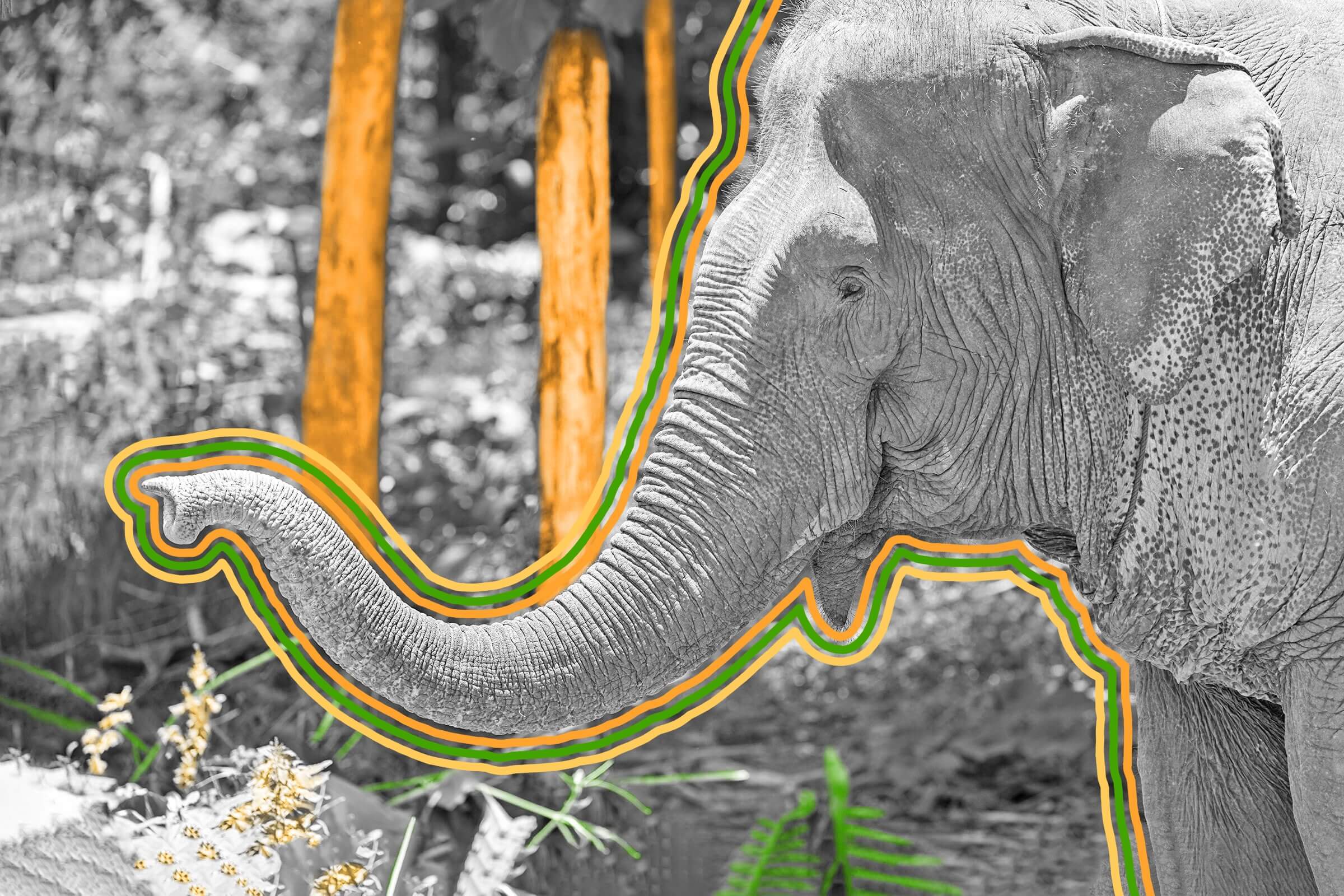
Elephant trunks have more than 40,000 muscles.
The evolutionary philosophy of elephants might be described as “go big or go home.” Elephants are the largest land animals on Earth, sport the largest ears of any living creature, and are all-around the strongest mammals by a long shot. But their most famous feature (and the inspiration behind the name of their taxonomic order, Proboscidea) is their trunk, which can grow to 6 feet long. The trunk is central to the elephant’s survival, helping the beasts breathe, smell, eat, and drink, and it’s controlled by a network of 40,000 muscles. By comparison, the human body has only around 650 muscles total.
But its large collection of muscles is only the beginning of an elephant trunk’s impressive capabilities. For one thing, the animal’s sense of smell is second to none — it’s been reported that elephants can smell water up to 12 miles away. One reason for this is that elephants have more scent receptors and a bigger olfactory bulb than any other living mammal (see: “go big or go home”), but this capability is helped along by the fact that an elephant trunk is essentially a sniffing antenna that can investigate smells closely and accurately. Elephants are also the only mammals that can remain submerged deep in the water but still breathe, thanks to their snorkeling trunks. Some scientists hypothesize that the modern elephant’s water-wading ancestors possibly developed long trunks for this very purpose. All in all, the elephant trunk is a biological masterpiece some 40 million years in the making.
From their gargantuan size to their matriarchal social structure, elephants are truly unique creatures in the animal kingdom. In fact, their closest living biological relatives look nothing like them — one lives in the sea, and the other weighs only about 10 pounds. Sirenians, known less elegantly as “sea cows” (which includes manatees and dugongs), share a common ancestor group with elephants, one that died out around 50 million years ago and was likely a wading animal that lived near water. The elephant’s other close relative, the rock hyrax (Procavia capensis), looks more like a rodent than any sort of lumbering land giant. However, upon closer inspection, the rock hyrax and elephant do share similar toes, wrists, and skull structures. The rock hyrax also has oversized incisors that act similar to elephant tusks. When it comes to nature, there’s always much more than meets the eye.

